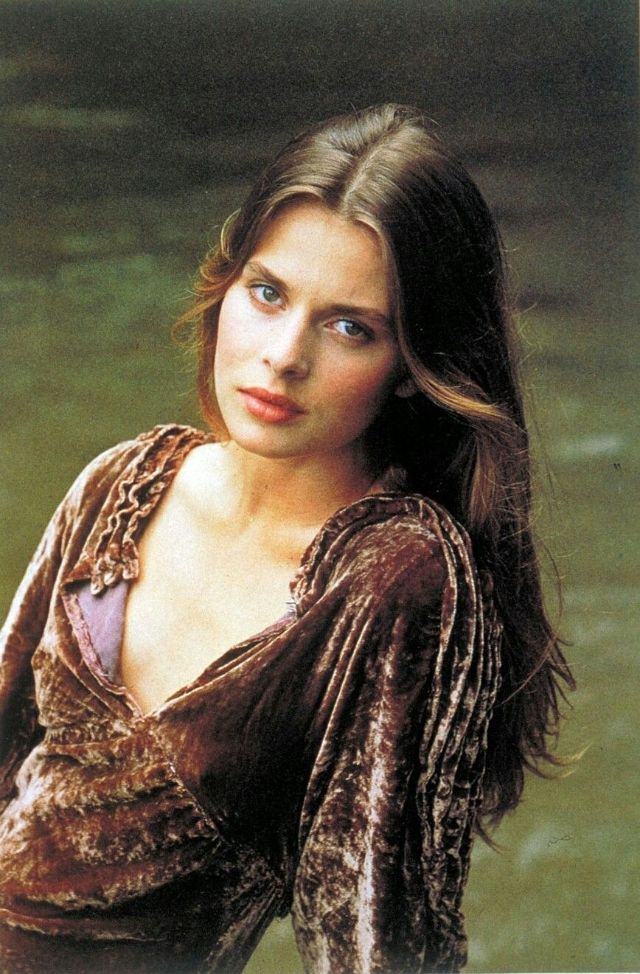
The Untamed Allure of a Cinematic Muse
Some stars shine. Others burn. But Nastassja Kinski—she haunted. With a gaze that could freeze time and a presence that felt both angelic and dangerous, she became a rare kind of legend. Not because she chased fame, but because art itself seemed to orbit her. Her beauty wasn’t the kind you could sum up in a sentence. It was raw, surreal, and deeply human—something you didn’t just see, but feel.

From silver screens to museum walls, Kinski wasn’t just a name in lights—she was the light itself, flickering somewhere between mystery and magnetism.

A Childhood Shaped by Chaos and Cinema
Born in Berlin in 1961, Nastassja Kinski stepped into a world already draped in complexity. The daughter of acclaimed actor Klaus Kinski, her early years were filled with turbulence. But rather than sink into the shadows of her father’s fame, she carved a path that was defiantly her own.

She started acting young, landing her first major role by 13. Her screen presence? Instant electricity. It wasn’t about being polished or cute. She had a wildness—a depth that felt ancient. The camera didn’t just love her; it obeyed her.
Video: A Tribute to NASTASSJA KINSKI
The Moment the World Stopped: Tess
Her international breakthrough came in 1979 when she starred in Roman Polanski’s Tess. The film was a visual poem, and Kinski was its soul. With her porcelain skin and soul-deep eyes, she brought Thomas Hardy’s tragic heroine to life in a way no one else could’ve pulled off.

Audiences were captivated. Critics couldn’t stop talking. And the art world took notice—fast. Kinski wasn’t playing a role. She was possessed by it.
Her performance in Tess earned her a Golden Globe and sealed her place in cinematic history. But more than awards, what lingered was her ability to pull people into emotional freefall with just a look.

More Than an Actress — A Living Work of Art
While Kinski delivered unforgettable performances in films like Cat People, Paris, Texas, and Faraway, So Close!, her legend wasn’t confined to cinema. She became a muse—an ethereal, restless spirit that photographers, painters, and designers couldn’t resist.

Her collaboration with legendary photographer Richard Avedon produced one of the most iconic images of the 20th century: Nastassja curled up, nude, with a massive python coiled around her body. It was primal, elegant, and unflinchingly vulnerable—a portrait that spoke of danger and beauty in one breath.
This wasn’t just a photo. It was a cultural moment. One that confirmed Kinski’s status as an untouchable icon of sensuality and soul.

Defying the Hollywood Mold
Kinski didn’t chase blockbusters. She didn’t bend to typecasting. She didn’t play it safe. That’s what made her so intoxicating. She chose roles that challenged the audience and sometimes herself. Even when the films didn’t land commercially, her performances always did.

She radiated an honesty that couldn’t be faked. Whether playing a mysterious lover, a grieving mother, or a lost wanderer, she made every emotion feel lived-in and sacred.
And she did it all while refusing to be boxed in. Hollywood couldn’t control her—and that’s exactly why she remains unforgettable.
Video: Nastassja Kinski s*xy rare photos and unknown trivia facts
A Beauty That Broke the Rules
What made Nastassja Kinski so different? It wasn’t just the cheekbones or the full lips or those expressive eyes. It was the energy—cold like moonlight but warm enough to burn through you.

She had this ability to be soft and feral, aloof and aching, all in the same breath. You couldn’t label her. Couldn’t catch her. She was elegance with a jagged edge. The kind of beauty that unsettled you. The kind that reminded you art should feel dangerous sometimes.
Even today, decades later, her photos still spark something primal. A sense of longing. A sense of reverence.

Living Quietly, But Leaving Loud Echoes
Though Kinski gradually stepped away from the spotlight, her legacy hasn’t dimmed—it’s deepened. She didn’t need to stay in front of the camera forever to be relevant. Her impact was already carved in stone.

You can still find her influence in modern fashion editorials, arthouse cinema, and music videos that borrow her mood, her stare, her chaos-wrapped-in-elegance energy. She may no longer dominate headlines, but she still dominates aesthetic language. Her spirit lingers like a haunting refrain in a forgotten song that suddenly plays and stops you cold.

Conclusion: The Muse Who Changed Everything Without Saying a Word
Nastassja Kinski is proof that some icons aren’t made—they’re born. She didn’t need a catchphrase or a gimmick. She didn’t follow rules. She didn’t even play the game. She simply showed up, again and again, as herself—unfiltered, spellbinding, and unforgettable.
She made the world feel something deeper than admiration—she made it ache. That’s not just star power. That’s legacy.





